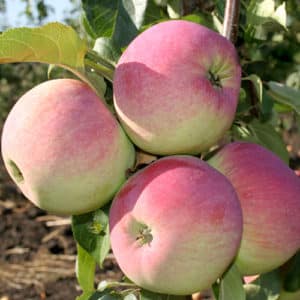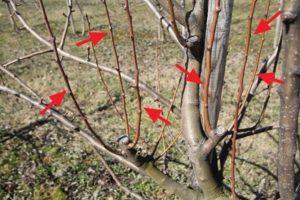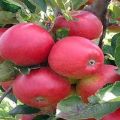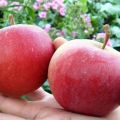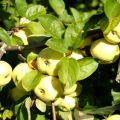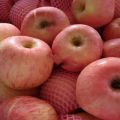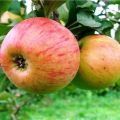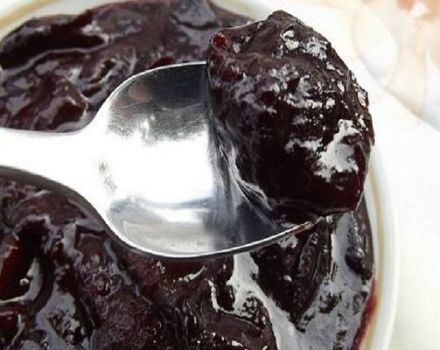Description of the variety of apple trees Geneva, when to plant and cultivation features
Almost all summer residents grow fruit trees on their site, including apple trees. Apple trees are popular among most summer residents in all regions due to the unpretentiousness and winter hardiness of most varieties. One of these varieties of apple trees is Geneva.
Description and characteristics of the apple tree Airlie Geneva
In order not to be mistaken in the choice, you need to study all the characteristics of the selected variety before buying a seedling. First of all, they pay attention to the pros and cons of the apple tree, the size of the tree, the width of the crown, yield and some other characteristics.
Dimensions of the tree
The trunk of a tree reaches a height of at least 5 m. The crown is spherical, wide. The branches are often crooked. The number of branches depends on the trunk. If it is tall, then the branches are straight and grow in large numbers. If the tree is short, the branches grow less. To control the height of the tree, it is pruned every year.
Yield
Inflorescences are light pink with a rich pleasant aroma. The yield does not depend on the region of cultivation, and the Geneva apple tree bears fruit equally in all regions. The more inflorescences are formed, the higher the yield.

Pollinating varieties are planted near Geneva. These include:
- James Grieve;
- apple hybrid Delicacy;
- Idared.
Apples ripen early, at the end of July. The fruits are not preserved until winter. The yield is high. Up to 100-140 kg of fruits are harvested from one tree.
Tasting qualities
The apples are small in size, the average weight is 200 g. The pulp with a rich apple aroma, fine-grained and juicy. The taste is sweet with a slight sourness. The peel is bright red with green veins. The tasting score is 4.6 points out of 5.
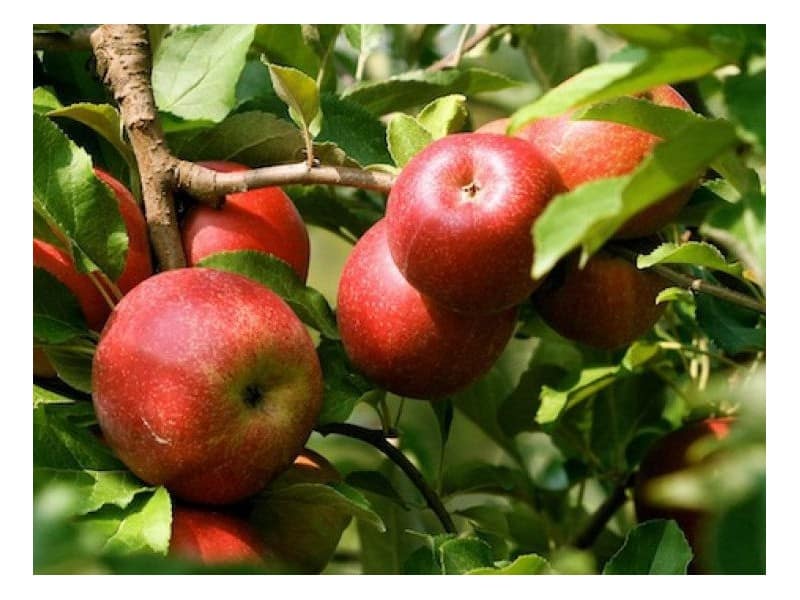
Winter hardiness
The Geneva apple tree is one of those varieties that perfectly tolerate frosty winters. Therefore, this variety is planted even in northern latitudes.
If, before the onset of winter, the soil around the trunk is mulched, then the frost will not be terrible for the tree.
Disease resistance
Another advantage of the Geneva hybrid is immunity to most diseases of fruit trees. The exception is scab; without proper care, the apple tree often suffers from this disease.
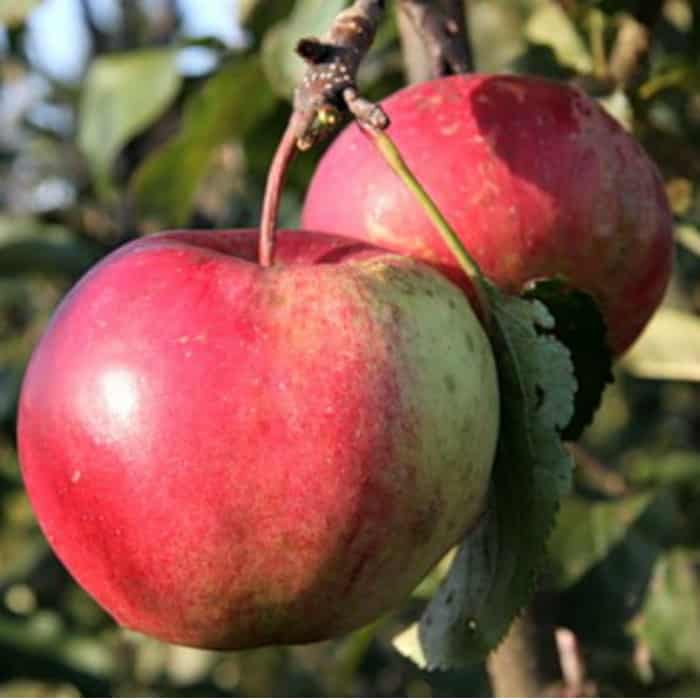
Pros and cons of the variety
Each variety has advantages and disadvantages. The advantages of the Geneva variety include:
- Early fruiting.
- Winter hardiness.
- Universal use in cooking.
- Resistant to diseases and insects.
- Delicious apples.
- Annual fruiting.
Geneva has few drawbacks. The main disadvantages include the duration of storage of apples. After harvesting, apples are stored for a short time. Therefore, they are immediately eaten or dishes are prepared from them. In addition, the lack of immunity to scab, powdery mildew and poor transportability over long distances due to the thin skin.
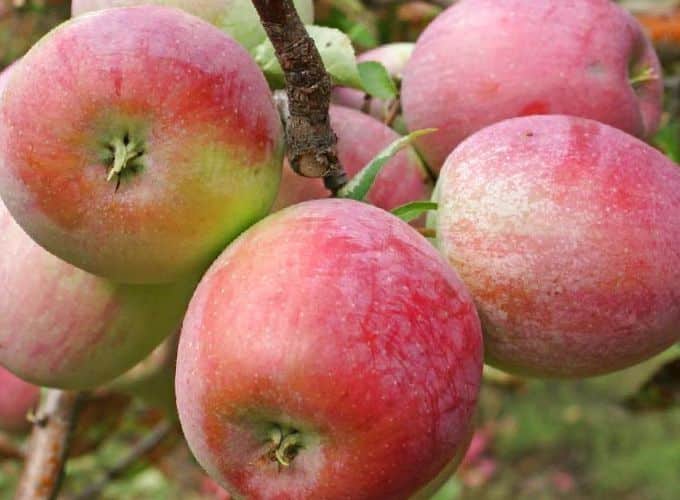
How to plant a tree correctly
When planting apple seedlings, attention is paid to preparing the soil for planting. First of all, how quickly the apple tree gets used to a new place depends on how prepared the soil is for planting a tree, and after how many years fruiting will begin.
When to plant
As a rule, the timing of planting a tree is spring or autumn. Summer is not suitable for planting a tree. The advantage of the autumn planting is that the seedling will have time to take root in a new place during the winter and begin to grow actively in the spring.
In autumn, the first decade of October is considered the most favorable period for planting. It is recommended to plant seedlings in autumn only in regions with fertile soil.
Spring planting begins after the soil has thawed. Plants are planted in late April - early March. Spring seedlings need abundant watering. The advantage of spring planting is that during the summer the apple tree will have time to get stronger and survive the frosts.
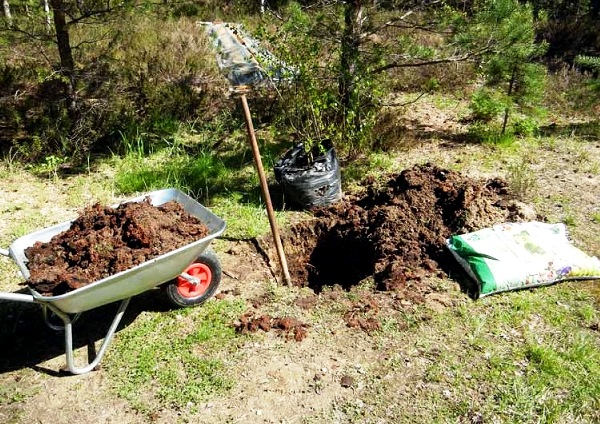
Site selection and preparation for planting
For the Geneva apple tree, only fertile soil is suitable. It is recommended to plant plants on light, loose soils, rich in nutrients. It is undesirable to plant an apple tree in the shade; it is recommended to choose open sunny areas. In darkening, the tree grows poorly and gives a meager harvest. Before planting, the land is prepared. Mineral fertilizing and organic matter are added to the soil. If the soil is with a high level of acidity, then add wood ash and dolomite flour.
Landing scheme
The Geneva variety is planted in the same way as any other apple hybrids. Stages of planting seedlings:
- Dig a hole up to 1 m deep, the width of the hole should be up to 70-80 cm.
- Pour nitrogen-containing fertilizers, manure and wood ash on the bottom of the pit.
- Leave the hole like this for 2-4 weeks.
- Drive a stake into the center of the hole, to which the trunk is tied after planting.
- Place the apple tree in a growth-activating solution for several hours before planting.
- Immediately before planting, the rhizome is dipped in a liquid clay solution.
- Put the tree in a hole and bury it with soil.
- Tamp the soil around the trunk.
- Water the tree abundantly with warm water and tie it to the stake.

If the seedling was planted in the spring, it is watered every week with plenty of water. Autumn seedlings are not watered after planting.
Features of plant care
The care of an apple tree includes watering, the introduction of nutrients, loosening the soil, whitewashing the trunk, and preventing diseases of fruit trees. Particular attention is paid to the formation of the crown. Pruning a tree allows more than just shape the crown of the apple treebut also helps to fight disease. After all, diseased branches cut off in time do not spread diseases further throughout the tree.
Watering
Although Geneva is a drought-resistant variety, attention should be paid to watering. Apples grow larger and juicier thanks to regular watering.
One tree takes 10 liters of water. Plants are watered four times per season:
- The first watering is carried out during the growing season, when the leaves are just beginning to bloom and shoots are forming.
- The second time Geneva is watered during the flowering period.
- The third watering is carried out at the time when the fruits ripen (trees are watered 1-2 times a week, while the apples are ripe).
- The last time the plant is watered after harvesting the entire crop and in October, before the onset of cold weather.
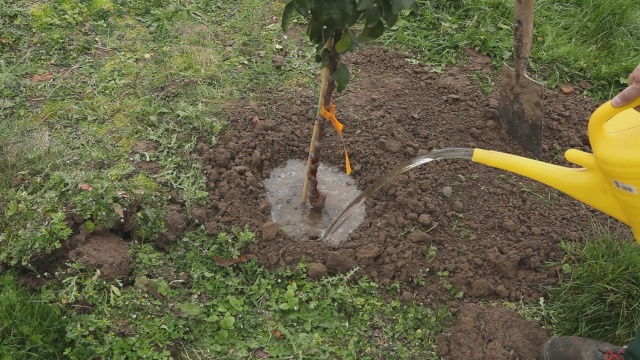
Trees are watered only with warm water. Cold water promotes the growth of fungi and other diseases.
Top dressing
During the growing season, nitrogen-containing fertilizers are applied to the soil. During flowering and fruit formation, potassium and phosphorus are added to the soil. It is also helpful to add organic feed.
Shaping and thinning
In the spring, the lower branches and shoots are removed at a distance of 50-60 cm. In each tier, 3-4 strongest branches are left, the rest is cut off. In the fall, dry and diseased branches are removed.
Barrel circle care, preparation for winter
Several times a month the soil around the trunk is loosened and all weeds removed. After warming up the soil, the area around the trunk is mulched. With the onset of autumn, the ground near the tree is loosened to a depth of 20-30 cm. In addition, the trunk is treated with lime or garden paint.
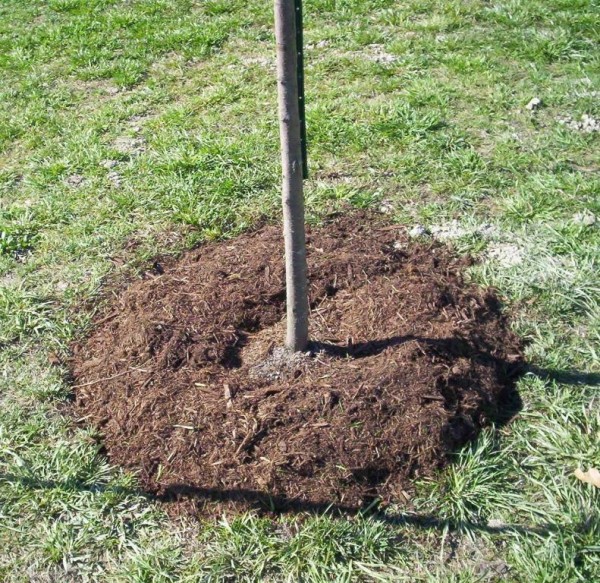
Disease and pest control
Geneva is characterized by low resistance to scab and powdery mildew, so these diseases should be prevented immediately. In addition, it is important to regularly inspect plants for harmful insects.
The trees are sprayed until the buds are blooming, then during flowering and after this period, the last time the apple tree is sprayed after the harvest has been collected. For spraying use Bordeaux liquid, the drug "Skor" or "Hom". Spraying with "Karbofos" or "Aktara" helps from insects. These preparations help kill ticks, aphids and the plum moth.

Apple tree subspecies
Since the Geneva apple variety is tall and reaches a height of more than 5 m, the cultivation of dwarf and columnar varieties is not practiced. There are no other subspecies in the hybrid.
Ripening and fruiting
The Geneva variety does not ripen immediately, so the apples will have to be picked as they ripen. Ripe apples appear in the last days of July and August. By the end of August, there are no ripe apples left on the tree. Those apples that have been damaged by birds or insects are used for making jams, jams, compotes or for baking. Healthy fruits are consumed fresh.
Due to the early fruiting and ripening of fruits, apples are not stored for a long time after harvest. Apples of this variety are eaten immediately after being picked from the tree, or they are allowed to cook processed products.
